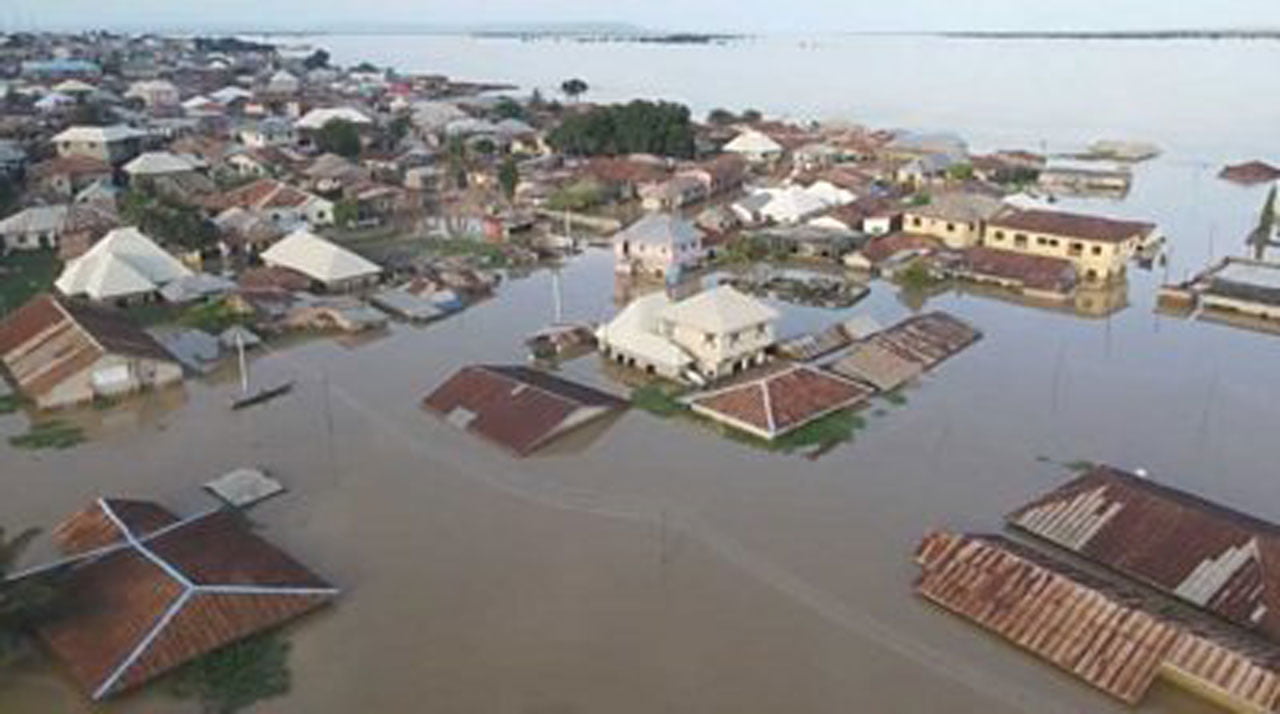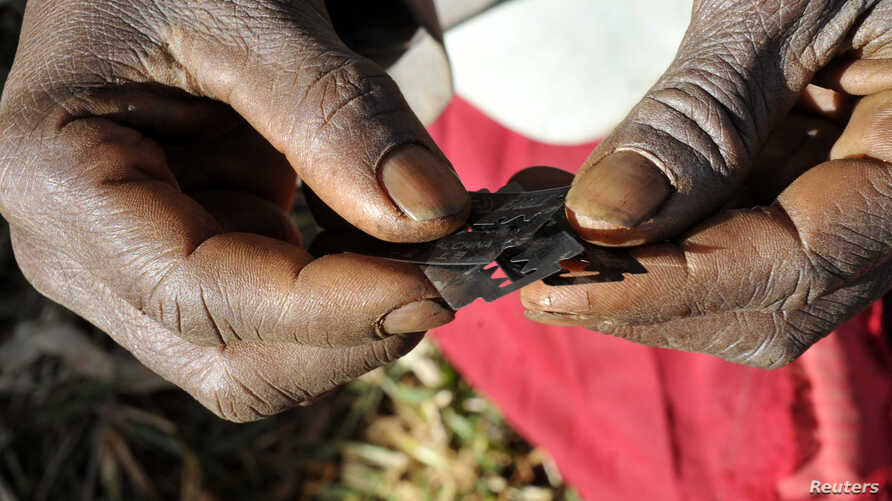As the flood water is receding following the reduction of rainfall among other factors, the Federal Government of Nigeria has moved for the recovery, stabilization and resettlement of affected communities across the country.
The Minister of Humanitarian Affairs, Disaster Management and Social Development, Sadiya Umar Farouq disclosed this Thursday in Abuja during the 56th Session of the State House Briefing organised by the Presidential Communications Team.
Farouq who spoke on key strides made by the President Muhammadu Buhari’s administration to provide emergency support and critical intervention as a fallout of the recent flood that affected various regions of the country, said she was currently overseeing the efforts in the response phase including the activation of a national emergency operation centre.
She therefore revealed that the ministry through its operational agency, the National Emergency Management Agency
was working towards the early recovery and stabilization of affected communities.
She said,”Today’s press briefing will feature updates on the efforts being made by the Federal Government, through the Federal Ministry of Humanitarian Affairs, Disaster Management and Social Development, and its operational agency, the National Emergency Management Agency.
“As you will hear from NEMA soon, I gave approval for them to make adequate plans towards the mitigation and preparedness for the 2022 floods, and I am currently overseeing the efforts in the response phase including the activation of a national emergency operation centre and situation room that collates data, provides risk communication, and coordinates the complimentary efforts of sister Ministries, Departments and Agencies (MDAs).
“You may note that as the flood waters are now receding and rainfall reducing, we must work towards early recovery and stabilization of affected communities. We have to also seek for durable solutions towards return and resettlement of affected communities; continue to provide lifesaving emergency assistance and prevent the spread of diseases; as well as consider food insecurity challenges that may arise.”
Farouq highlighted the importance of coordination and partnership in national emergencies, which according to her, is the core objective and scope of the National Flood Emergency Preparedness and Response Plan.
“Let me remind you that, the Flood plan was a directive issued by His Excellency Mr. president, given his concerns of the experiences of floods in 2018 and 2020. The plan was developed by multiple stakeholders and all MDAs and it finally received approval of the Federal Executive Council in September 2022.
“The Flood Plan is currently guiding our field operations and addressing any gap in coordination we’ve faced at the Federal and Sub-National levels. Again, I urge all stakeholders to key into it and use it as a checklist for activities and interventive actions they are supposed to perform at each phase,”she said.
The Minister commended local communities, civil society organizations, nongovernmental organizations, the private sector, UN Agencies and donors for their support and efforts.
According to her, there is need to key into the national response and share information and data, to avoid duplication of efforts and widening of gaps.
“In line with our coordination mandate, my Ministry will continue liaising with critical and relevant actors to ensure assistance reaches the most affected.
“The Ministry would like to use this opportunity to announce its partnership with the World Bank, towards conducting a post disaster rapid impact assessment using the Global Rapid post-disaster Damage Estimation (GRADE). This exercise is intended to give an immediate understanding and estimation of the extent of damage and loss caused by the flood.
“This rapid estimation is needed because the physical Post Disaster Needs Assessment (PDNA) will take between 6 to 8 months. So while we wait for the PDNA to be conducted, we can use the GRADE for planning and financial purposes.
“As GRADE has been found to be fairly accurate, the findings will guide programs of recovery and flood prevention. So we are keenly waiting for the result of the GRADE assessment on or before 2nd December, 2022,” she revealed.
In his remark, the Director General, National Emergency Management Agency, NEMA, Mustapha Habib Ahmed recalled that prior to the onset of the rainy season, the Nigerian Meteorological Agency (NIMET) has presented its Seasonal Climate Prediction (SCP) for 2022 to the public on 17th February 2022 in an event that was given maximum coverage by the press. According to the SCP, the 2022 annual rainfall pattern is expected to be normal to above-normal throughout Nigeria.
In the same vein, he said the Nigerian Hydrological Services Agency (NIHSA) in its 2022 Annual Flood Outlook (AFO) has forecasted flood situation for different parts of Nigeria, revealing that the flood outlook highlighted that 233 LGAs in 32 states and the FCT are within highly probable flood risk areas, while 212 LGAs in 35 states of the federation are within moderately probable flood risk areas.
Ahmed also disclosed that the AFO predicted coastal flooding in Rivers, Delta, Lagos and Bayelsa States due to rise in sea level and tidal surge and urban flooding in some locations such as Lagos, Abeokuta, Osogbo, Ibadan, Benin City, Asaba, Warri, Onitsha, Port Harcourt, Kaduna, Sokoto, Yola, Abakaliki, Birni-Kebbi, Makurdi and other major cities as a result of poor drainage system management.
According to him, as part of its annual flood disaster preparedness, NEMA convened a meeting of all stakeholders between 26th to 27th April 2022 to critically analyze the 2022 Annual Climate Prediction and the Annual Flood Outlook and come up with the disaster management implication of the two predictions.
He noted that at the end of the 2-day meeting, the group of experts came up with the 2022 Disaster Early Warning Message highlighting the implications and recommendations across climate sensitive socio-economic sectors including the following: Water Resources and Infrastructure, Agriculture and Food Security, Health, Transport and Infrastructure.
“Letters on the flood Early Warning Message produced were sent to all the state Governors, the FCT Minister and members of the National Assembly as well as respective recommendations to mitigate impacts of the anticipated outcomes and avert loss of lives, means livelihoods, public and critical national assets and environmental dislocation.
“Furthermore, the NEMA GIS produced Flood Vulnerability Mappings for the whole country based on 2022 AFO released by NIHSA highlighting all communities at risk and shared the documents with its partners.
“Throughout the period, NEMA has worked closely with State Governments and all relevant partners to achieve its mandate for effective and efficient disaster management in Nigeria. In monitoring the level of preparedness of state governments and other partners, NEMA has constantly evaluated the plans they are putting in place in response to the recommendations contained in the Early Warning Messages.
“In furtherance to its mandate of Disaster Risk Reduction, NEMA has organized a National workshop on 2nd August, 2022 focused on disaster management implication of the predictions by NIMET and NIHSA to enable effective flood preparedness, prevention, mitigation and response nationwide.
“The workshop recorded a total of over 150 participants from members of the national assembly, federal ministries, departments and agencies, UN Agencies, state Emergency Management Agencies (SEMAs), Local and International NGOs, Red Cross, Academia, CBOs, media, Armed Forces, para-military organizations, dam managers and River Basin Authorities. At the end of the workshop, a communiqué with far-reaching recommendations was issued to the public.
“Subsequently, flood early warning jingles were broadcasted through selected radio and TV stations in both English and local languages to sensitize the public on flood disaster preparedness, mitigation and response.
“The current disaster outlook indicate that so far the flood has wreaked havoc in 36 States of the Federation and the FCT. 612 persons were reported dead; 3,219,780 are affected; 1,427,370 persons are displaced and 2,776 others are injured. A total of 181,600 houses are partially damaged; 123,807 houses are totally damaged; 176,852 hectares of farmland are partially damaged, while 392,300 hectares of farmland are totally destroyed. There is a widespread environmental dislocation,” he revealed.
He said all through the peak of the flood season, he had personally lead NEMA emergency response teams to some of the disaster hotspots nationwide to conduct damage and loss assessment in collaboration with State Emergency Management Agency (SEMA) staff.
Ahmed disclosed that NEMA has deployed its emergency response assets including mobile water purification equipment, search and rescue boats and Mobile Intensive Care Unit (MICUs) Ambulances to conduct life saving first aid and support to vulnerable populations.
“So far, NEMA has reached out to and responded to over 1, 427,370 displaced persons in 28 states and the FCT. The provision of food and non-food items for immediate relief and building materials to facilitate rehabilitation of the impacted population is still ongoing.
“These States are Abia, Adamawa, Anambra, Bayelsa, Ekiti, Enugu, Ebonyi, Imo, Jigawa, Kaduna, Kano, Kwara, Lagos, Nassarawa, Niger, Ogun, Ondo, Oyo, Rivers, Sokoto, Taraba, Yobe, Osun, Ekiti, Rivers, Edo, Delta, Bauchi, and FCT. The remaining States comprising of Akwa Ibom, Cross Rivers, Kwara, Zamfara, Katsina, Kebbi, Borno and Gombe are on-going. Our officers are already on ground in Gombe, Katsina, Zamfara and Borno to flag off the distribution today.
“In furtherance to the Federal Government intervention to vulnerable population, His Excellency, President Muhammadu Buhari, GCFR has approved the release of 12,000 Metric Tons of grains comprising of Rice, Sorghum and Garri from the National Strategic Reserve to NEMA for distribution to 36 states of the federation and FCT. Most of the states have already received their consignment of the grains.
“The Presidential Committee on Flood Relief and Rehabilitation under the Chairmanship of Alhaji Aliko Dangote has donated assorted foodstuff worth 1.5 Billion Naira to NEMA for distribution to all the states of the Federation. NEMA has already provided warehouse facilities in the six geopolitical zones of the federation to receive the materials. A plan has also been put in place by NEMA to transport and handover the relief materials to the state governments and the FCT authority.
“The FMHADMSD is coordinating a country wide support by World Bank to undertake a comprehensive Impact Analysis and Post Disaster Needs Assessment (PDNA) similar to what had obtained after the 2012 flood. This will enable government to appreciate the extent of damage caused by the flood including the economic cost implication on housing, infrastructure, agriculture and other sector sectors,” he said.
The NEMA DG noted that agency had requested support from the United Nations in respect of assistance from the Central Emergency Relief Funds (CERF). UN-OCHA has confirmed that some UN agencies have accessed the funds and would soon intervene across sectors.
“Going forward, NEMA through its Zonal, Territorial and Operations Offices nationwide is conducting damage and loss assessment on farmlands, fisheries, poultry facilities and livestock to enable effective planning for Emergency Agricultural Intervention as the flood waters recede to support famers, fishery owners and pastoralists to get back to work and safeguard the heavily impacted national food security,” he assured.
He added,”While NEMA has done everything possible to ensure early response to population in need from the inception of the flood seasons, there is no doubt that a lot of challenges have been encountered during the operation. Some of the challenges include the slow movement of both human and material assets in addition to relief items due to flooded and washed away roads, bridges and issues of safety and security in some areas. In some instances, our partners in the Nigerian Air Force and Military Disaster Response Units (DRUs) have supported us with their assets to conduct airdrop of relief materials in cut away locations.
“I want to use this opportunity to express my sincere appreciation to Mr. President, the Honorable Minister, MHADMSD, SEMAs, the Nigeria Red Cross and all our esteemed partners especially members of the press for supporting NEMA deliver its life saving support to affected persons from the onset of the rainy season.”






2 Comments